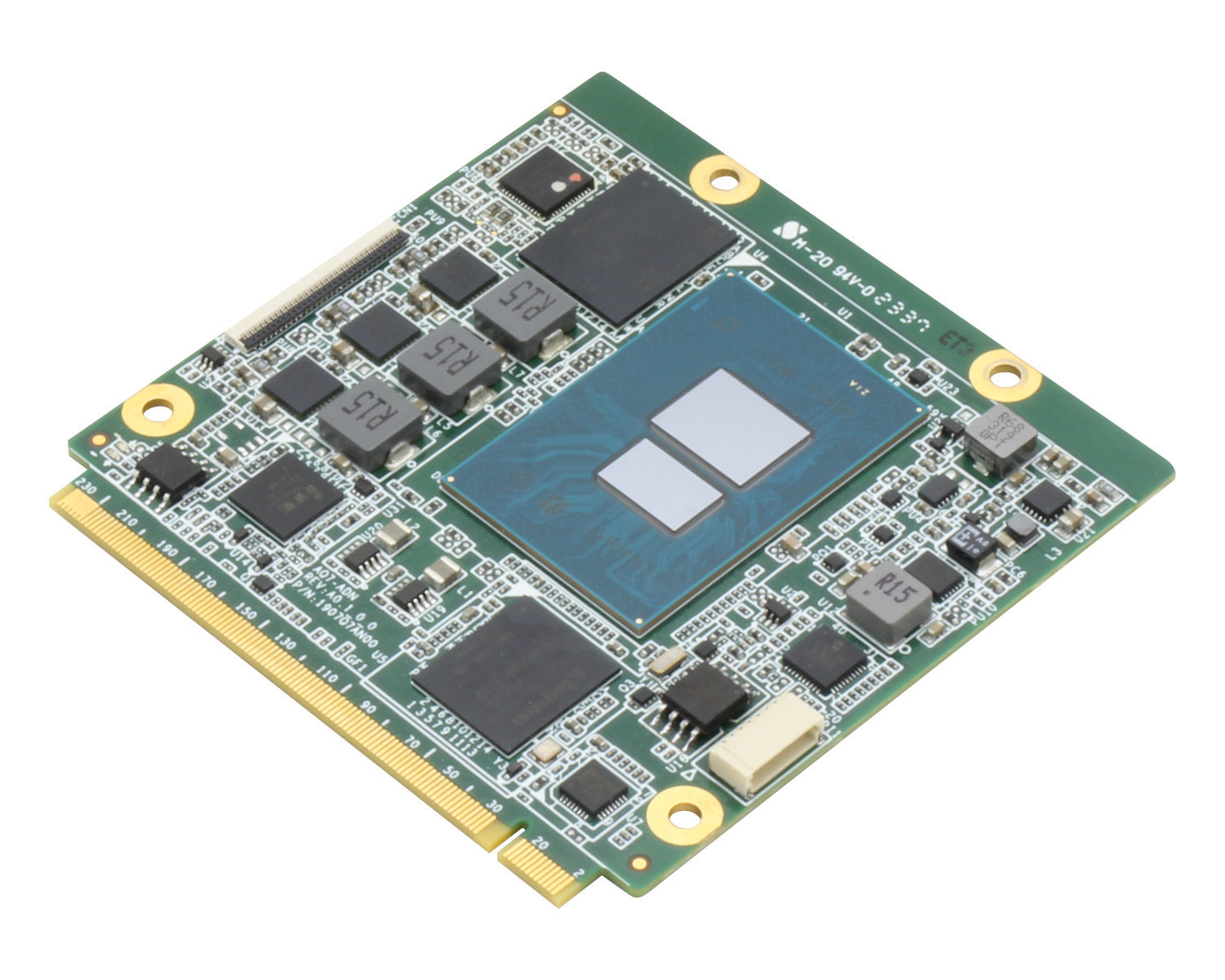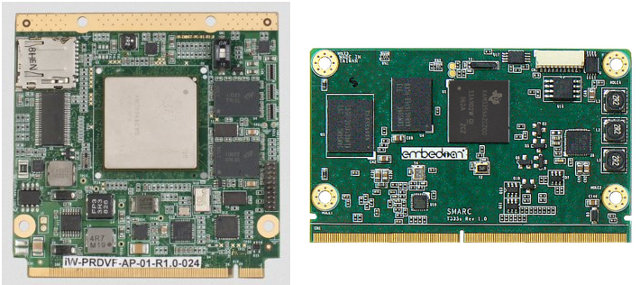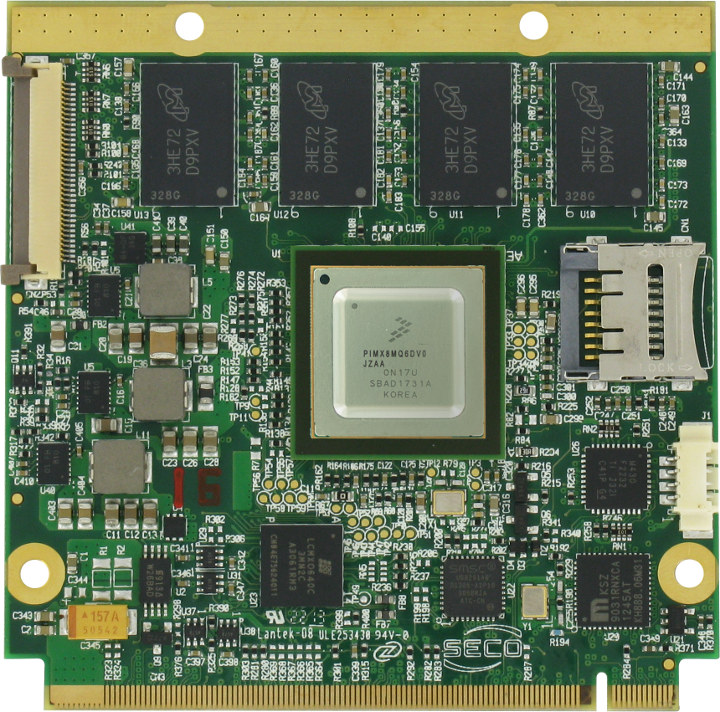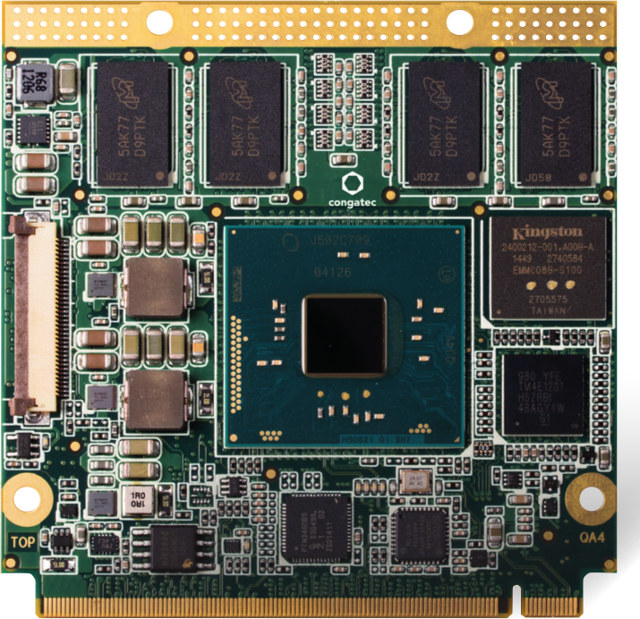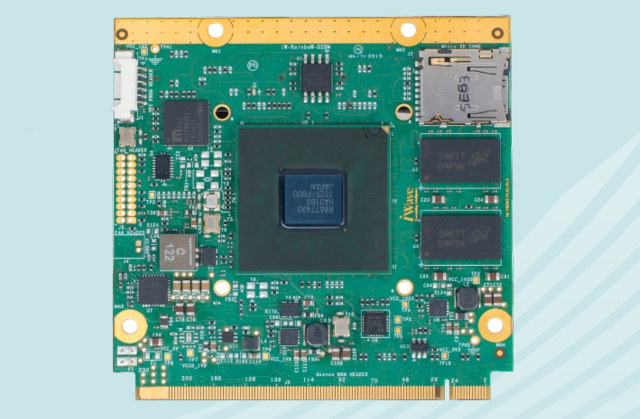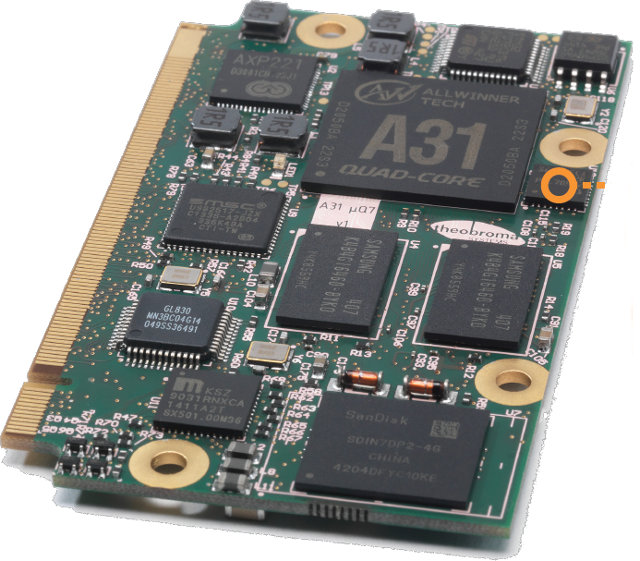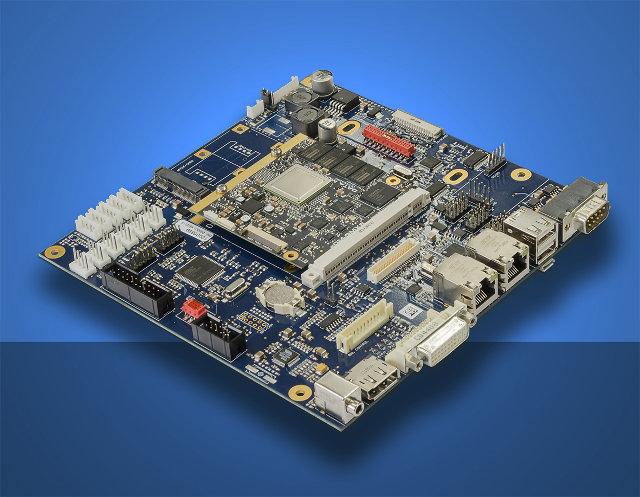AAEON AQ7-ADN is a Qseven 2.1-compliant system-on-module based on Atom Processors x7425E, Intel Processor N, or Intel Core i3-N305 Alder Lake-N processor equipped with up to 8GB LPDDR5x and 64GB of eMMC flash storage. AAEON has already introduced Alder Lake-N COM Express and SMARC modules with the COM-ADNC6 and uCOM-ADN respectively, and the AQ7-ADN adds another system-on-module standard to its list of Alder Lake N-Series modules with a Qseven 2.1 SoM that offers four PCIe Gen x1 interfaces and a SATA storage interface. AAEON AQ7-ADN specifications: Alder Lake N-series SoC (one or the other) Intel Atom x7425E quad-core processor up to 3.4 GHz with 6MB cache, 24EU Intel UHD Graphics @ 1.00 GHz; TDP: 12W Intel Processor N50 dual-core processor up to 3.4 GHz with 6MB cache, 16EU Intel UHD Graphics @ 750 MHz; TDP: 6W Intel Processor N97 quad-core processor up to 3.6 GHz with 6MB cache, 24EU Intel […]
Overview and List of System-on-Module and Computer-on-Module Standards – Q7, SMARC, COM HPC, and More
A System-on-Module (SoM), also known as a Computer-on-Module (CoM), is a small board with the key components of a computer such as SoC, memory, and possibly others components such as PMIC (Power Management IC), an Ethernet PHY, as well as one or more connectors used to connect to a baseboard, also called carrier board, which features standard ports such as Ethernet (RJ45), USB ports, SATA, power jack and so on. The advantages of using of baseboard + SoM design compared to a single board are at least twofold: Most of the PCB design complexity is often around the CPU/SoC and high-speed buses connected to the CPU/SoC. So you could buy an SoM, design your own baseboard and get a complete design relatively in a short amount of time, with reduced development resources and costs. The design is modular, so you could easily upgrade from one SoM to another one. For […]
SECO Q7-C25 / Q7-C26 QSeven SoMs Feature NXP i.MX 8M / i.MX 8Quad Processor
We’ve previously covered SECO’s SM-C12 SMARC 2.0 i.MX 8M system-on-module, but the company has just unveiled two new module families which are compliant with Qseven – another SoM standard – and powered by NXP i.MX 8M dual/quad core Cortex A53 processor and NXP i.MX 8Quad Cortex A53 or A72/A53 SoC with respectively Q7-C25 and Q7-C26 systems-on-module. SECO Qseven i.MX 8/8M System-on-Module Q7-C25 / Q7-C26 specifications: SoC Q7-C25 (one or the other) NXP i.MX 8M Quad 4x Cortex-A53 cores up to 1.5GHz, 1x Cortex-M4 F real-time core, Vivante GC7000Lite GPU, VPU NXP i.MX 8M Dual 2x Cortex-A53 cores up to 1.5GHz, 1x Cortex-M4 F real-time core, Vivante GC7000Lite GPU, VPU NXP i.MX 8M QuadLite 4x Cortex-A53 cores up to 1.5GHz, , 1x Cortex-M4 F real-time core, Vivante GC7000Lite GPU no VPU Q7-C26 (one or the other) NXP i.MX 8QuadMax 2x Cortex-A72 cores + 4x Cortex-A53 cores + 2x Cortex-M4F cores, 2x Vivante […]
Congatec Introduces Intel Atom x5-E8000 Thin mini-ITX Board, COM Express & QSeven Modules
Following Intel’s announcement of their new Atom x5-E8000 quad core processor with 5W TDP/4W SDP and 7-year availability earlier today, Congatec published a press release for four new platforms based on the processor with conga-QA4 Qseven module, conga-MA4 COM Express Mini & conga-TCA4 COM Express Compact modules, as well as conga-IA4 industrial-grade Thin Mini-ITX board. All four products are actually variation of existing Braswell platforms, but Intel Atom x5-E8000 brings 64-bit computing even cheaper thanks to its $39 recommended customer price. So I’ll just look at the QSeven module specifications in details: SoC – Intel Atom x5-E8000 quad core “Braswell” processor @ 1.04 GHz / 2.00 GHz (Burst) with 2MB L2 cache, and Intel HD Gen8 graphics @ 320 MHz; 5 W TDP. System Memory – Up to 8GB onboard DDR3L with 1600 MT/s On-board Storage – Up to eMMC 4.5.1 onboard flash (optional), 8 MB serial SPI firmware flash […]
iWave Systems iW-RainboW-G20M-Q7 SoM Features Renesas RZ/G1M Cortex A15 SoC
iWave Systems has unveiled a new Qseven 2.0 compliant system-on-module part of their RainboW family with iW-RainboW-G20M-Q7 module powered by Renesas RZ/G1M dual core ARM Cortex A15 SoC, and targeting industrial and automotive applications with over 10 years of support. iW-RainboW-G20M-Q7 module specifications: SoC – Renesas RZ/G1M dual core ARM Cortex A15 @ 1.5GHz with PowerVR SGX544MP2 GPU @ 520MHz System Memory – 1GB DDR3(expandable) Storage – 4GB eMMC Flash (expandable) + 2MB SPI NOR Flash for boot code, and optional Micro SD Slot Connectivity – 1x Gigabit Ethernet PHY USB – 2 Port USB HUB I/Os via 230-pin Qseven edge connector: Storage – 1x SATA , 1x SDHC USB – 1x USB3.0 host, 2x USB 2.0 hosts, or 1x USB 2.0 device Display – 1x LVDS Connectivity – 1x Gigabit Ethernet Audio – 1x I2S Audio 2x PWM, 2x I2C, SPI, CAN, UART, GPIOs 1x PCIe (multiplexed with SATA) JTAG or […]
Theobroma Systems Introduces A31-μQ7 Micro QSeven System-on-Module Powered by Allwinner A31 Processor
Most standardized system-on-modules for embedded and industrial applications are still based on established Silicon vendors such as Freescale, Texas Instruments or Atmel, simply because documentation and support is generally much better than relatively new SoC vendors, most of the time China-based, such as Allwinner or Rockchip. That does not mean nobody is using Rockchip or Allwinner on their modules, as shown recently with Olimex RK3188-SOM, and previously with an Allwinner 10 CoM. But Theobroma Systems, an Austrian based engineering services and embedded systems solutions company, may have a first with a Micro Qseven compliant modules powered by Allwinner A31, simply called A31-μQ7. A31-μQ7 module specifications: SoC – Allwinner A31 quad core ARM Cortex A7 processor up to 1.2GHz with 256KB L1 cache / 1024KB L2 cache, and PowerVR SGX544MP2 GPU System Memory – Up to 2GB DDR3 Storage – Up to 64GB eMMC, Up to 16MB SPI NOR flash, On-board […]
e-con Systems Unveils eSOMiMX6 SoM based on μQ7 Form Factor, and Ankaa Development Kit
QSeven is one of the many standards for system-on-modules, and it defines both Qseven (Q7) 70x70mm modules, and smaller μQSeven (μQ7) 70x40mm modules. While there are quite a few SoMs following the larger form factor, few modules are based on micro Q7, and e-con Systems eSOMiMX6 has just launched one of these tiny modules with eSOMiMX6 system-on-module powered by Freescale i.MX6 processors, as well the corresponding Ankaa development kit comprised of the SoM and a baseboard. eSOMiMX6 module specifications: SoC – Freescale i.MX6 single, dual or quad Cortex A9 processor @ 800MHz to 1.2 GHz with Vivante GPUs System Memory – 256MB/512MB (Solo only), 1GB (default), or 2GB (dual/quad only) LVDDR3 RAM Storage – 4GB (default) to 64GB eMMC flash, 2MB SPI NOR flash, and SD/MMC + SATA II interfaces via MXM connector Display / Video Output: HDMI up to 1920 x 1080 Dual channel 24-bit LVDS 24-bit LCD RGB MIPI […]
DATA MODUL mini-ITX Board Supports Freescale i.MX6 & Intel Bay Trail-I QSeven Modules
DATA MODUL, a specialist supplier of display technology, has recently unveiled eDM-mITX-CB-Q7-Info, a mini-ITX Baseboard for ARM & x86 Qseven modules optimized to drive large panels for digital signage applications. In theory, the board should support any Qseven modules, but for now only Data Modul’s Freescale i.MX6, and Congatec conga-QA3 Intel Atom E3800 series modules have been optimized and officially certified to work with the motherboard. Precisely, the board is optimized and certified for the following modules: DATA MODUL ARM Qseven SoMs: eDM-QMX6 (i.MX6Quad) eDM-DMX6 (i.MX6Dual) eDM-DLMX6 (i.MX6Dual lite) Congatec x86 Qseven SoMs: Conga-QA3 with Atom E3845 (Quad core) Conga-QA3 with Atom E382x (Dual core). Three models: Atom E3827, E3826 or E3825. Conga-QA3 with Atom E3815 (Single core) You may have heard about EDM, a competing module standard, previously, but the eDM prefix in the ARM modules or the mini-ITX board names has nothing to do with this standard, as […]


